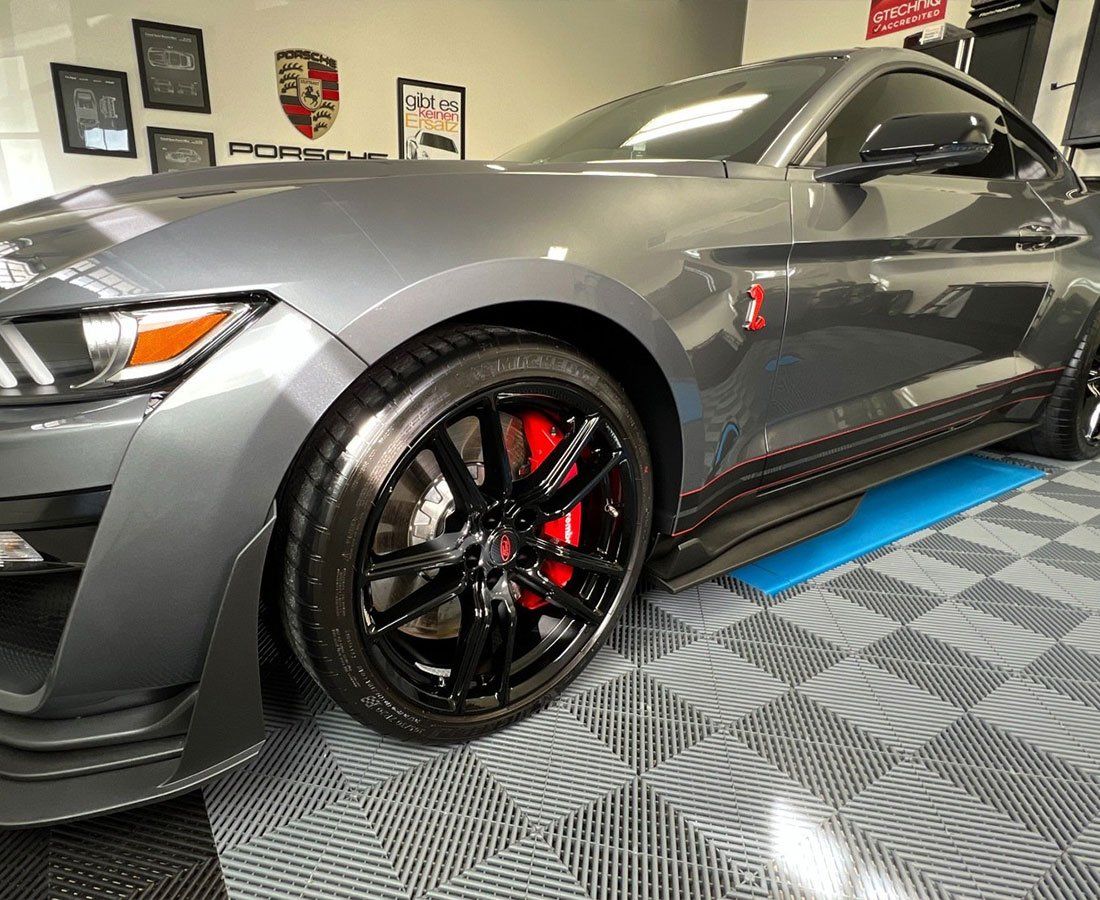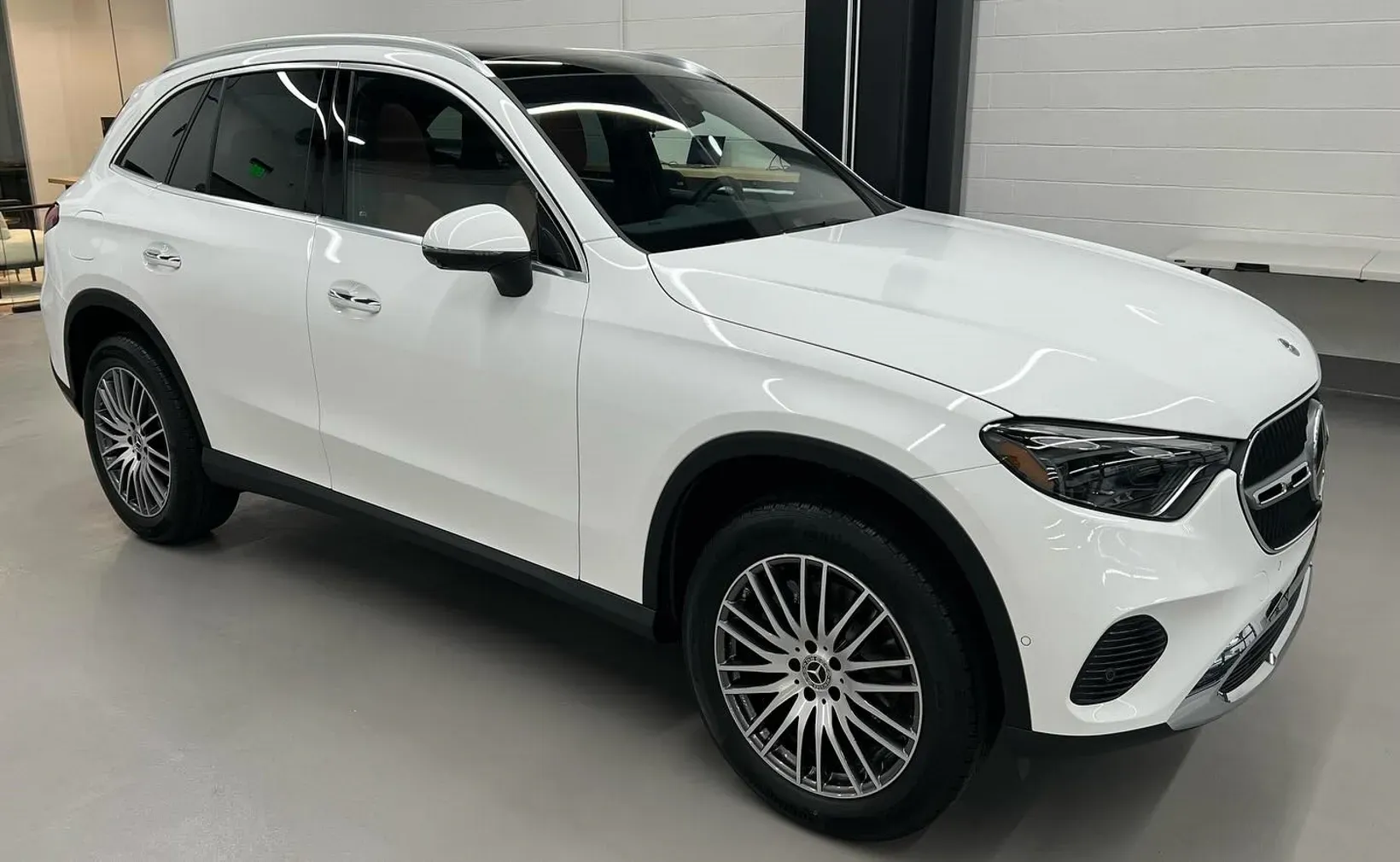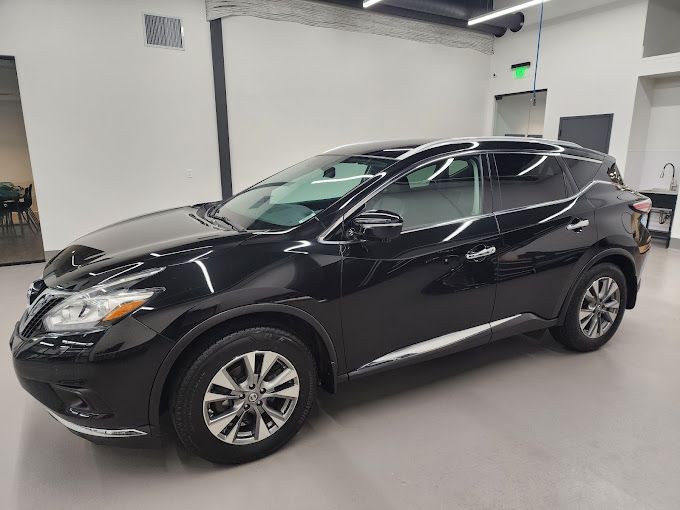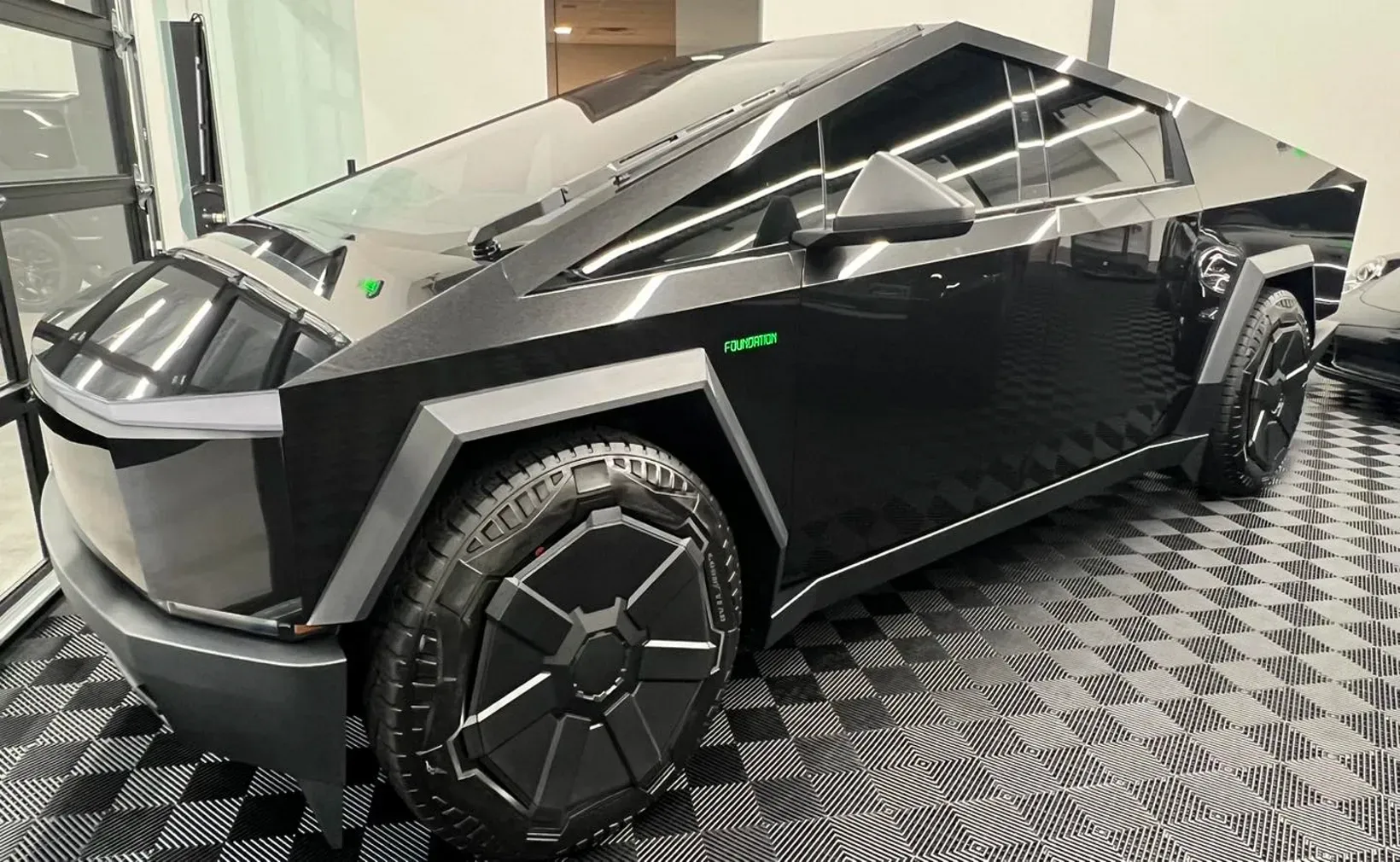DIY vs. Professional Ceramic Coating: A Comprehensive Comparison
(513) 544-4254Choosing between DIY and professional ceramic coating can take time and effort. You want your car to shine with long-lasting protection without overspending or risking a subpar job. Throughout this article, we will dive into every detail you need to make the most informed decision about whether to go for DIY or professional ceramic coating!
DIY and professional ceramic coating come with their own sets of challenges and rewards. Whether it's washing and claying your vehicle in your garage or trusting experts with high-end tools in a controlled environment, knowing the ins and outs of each method will uncover some surprising insights. Let’s dive into what it takes to achieve that showroom shine.
Professional ceramic coating services offer unmatched protection and durability due to their access to advanced compositions, equipment, and techniques. While DIY options can be cost-effective, the potential for errors during application may lead to imperfect results. It's advisable to assess factors such as expertise level, desired longevity of the coating, and the condition of the vehicle's paint when deciding between DIY and professional ceramic coating.
Comparing DIY and Professional Techniques
When it comes to DIY ceramic coating techniques, it's all about putting in the effort to achieve a showroom-worthy finish. It starts with thorough cleaning and decontamination—this means washing, claying, and polishing to ensure the surface is free from any impurities that could interfere with the bonding of the ceramic coat. After preparing the surface, applying the ceramic coating is typically done with an applicator pad, meticulously spreading the coat evenly across the entire vehicle surface. Once applied, careful buffing is necessary to ensure a smooth and uniform finish. The tools used are usually basic and require significant manual effort, highlighting the hands-on nature of the DIY approach.
The DIY process emphasizes personal involvement and meticulous attention to detail. It's an opportunity for car enthusiasts to take control of their vehicle's maintenance and invest time and effort directly into its upkeep. However, this level of involvement also requires a steep learning curve and patience. Potential errors during application can result in inaccurate results, emphasizing the importance of a systematic and precise approach.
The appeal of DIY ceramic coating lies in the cost-effectiveness and the rewarding feeling of personally safeguarding your vehicle's paintwork. DIY kits are generally more affordable and offer a sense of accomplishment upon completion. Yet, it's essential to recognize that achieving professional-quality results through DIY techniques often demands advanced skills and expertise.
On the other hand, professional ceramic coating techniques elevate the process to an entirely different level. Trained technicians employ advanced techniques, including machine polishing, paint correction, and working in controlled environments to ensure flawless results. These professionals have access to specialized tools such as high-pressure steam cleaners and professional-grade polishing machines that contribute to achieving an unparalleled level of precision.

Cost Analysis: DIY vs. Professional Services
When it comes to DIY ceramic coating, the initial investment seems quite budget-friendly, with kits typically ranging from $50 to $150. However, there are some additional necessities like clay bars, polish, microfiber towels, and protective gear that need to be factored in. These items can increase the total cost of a DIY project to approximately $100 to $300.
Sure, these add-ons might feel like they're nickel-and-diming you, but each one plays a vital role in ensuring your DIY coating job is done properly. For example, the clay bars help prepare the paint surface by removing embedded contaminants, while the polish helps to eliminate any minor imperfections. Not to mention, good quality microfiber towels are essential for a streak-free finish, and protective gear ensures your safety during the application process. So, even though they add to the cost, they are crucial for achieving satisfactory results.
On the other hand, professional ceramic coating services come with a higher price tag ranging from $500 and upwards to $2000 or more, depending on the size of the vehicle and the complexity of the job.
It might seem daunting to consider paying such a significant amount upfront, but here's the thing: professional services often include comprehensive warranties and long-term protection. This means you're not just paying for a shiny car today; you're investing in long-term benefits with warranties that give you peace of mind. This adds substantial value to their service, which justifies the higher initial cost.
Step-by-Step Application: DIY Approach
When it comes to applying a ceramic coating to your vehicle, following each step meticulously is crucial for achieving a successful and long-lasting outcome. Let's break down each step to ensure you're fully equipped with the knowledge you need before diving into the application process.
Step I: Preparation
Before anything else, your vehicle needs to be spotless. Start by giving it a thorough wash using car shampoo and water. Once it's clean, dry the surface thoroughly. Using a clay bar is essential; it helps eliminate impurities embedded in the paint, ensuring a smooth base for the ceramic coating. It's like prepping a canvas before painting on it. Once your car is clean and free from contaminants, it's time to polish the surface, further smoothening the paint and allowing for optimal bonding of the ceramic coat.
Quick Tip: Make sure you carry out these steps in a shaded area—direct sunlight can dry cleaning agents quickly, leaving behind unwanted streaks.
Step II: Application
Now comes the exciting part—applying the ceramic coating. Using an applicator pad, take a modest amount of the product and spread it evenly over a small section of the car's surface. This ensures that the coating is applied uniformly without streaks or missed spots. Remember, patience is key here; rushing through this step might affect the overall finish.
Pro Tip: Work systematically and efficiently, section by section, until you've covered the entire vehicle.
Step III: Curing
Once you've applied the coating, it needs time to cure properly. Follow the manufacturer's instructions closely, as curing times can vary. This involves allowing the coating to bond with the paintwork and form a protective layer. During this phase, it's essential to keep your vehicle away from water and other contaminants that could interfere with the curing process.
Step IV: Buffing
After allowing sufficient time for curing, it's time to buff off any excess product using a clean microfiber cloth. Gently wipe down the treated surfaces to achieve a uniform finish while removing any residue left behind.
Each step in this process plays a vital role in ensuring that your DIY ceramic coating application is effective and long-lasting. Taking your time and being meticulous with each phase will lead to outstanding results.
Advantages and Drawbacks of DIY Coating
When considering a DIY ceramic coating project, cost-effectiveness may be at the forefront of your considerations. DIY kits generally have a lower upfront cost compared to professional services, making them an attractive option for budget-conscious individuals. Professional-grade materials and services may require a higher initial investment, whereas DIY kits offer an affordable entry point into the world of ceramic coatings.
In addition to being cost-effective, opting for the DIY approach can provide a valuable learning experience. The process of applying a ceramic coating can be educational and gratifying, allowing you to gain personal satisfaction from being directly involved in the maintenance of your vehicle. It presents an opportunity to expand your knowledge about car care as you develop a deeper understanding of the intricacies involved in protecting your vehicle's paintwork.
Drawbacks of DIY Ceramic Coating
However, it's important to recognize that opting for a DIY ceramic coating comes with certain drawbacks. One significant consideration is the time investment required for proper application. The preparation and application process can be time-consuming, especially for individuals new to this type of maintenance. Depending on the size and condition of your vehicle, dedicating several hours or even days for larger vehicles is not uncommon.
Another notable drawback is the potential risk of errors inherent in the DIY approach. Mistakes during the application process, such as uneven coverage or incomplete curing, can lead to imperfect results, compromising both the protective capabilities and appearance of the ceramic coating. Achieving uniform coverage without streaks or uneven application demands precision and expertise that may take time and practice to master.
While the cost-effectiveness and hands-on experience are compelling aspects of DIY ceramic coatings, it's important to carefully weigh these against the potential time commitment and risks associated with application errors. Making an informed decision requires thoughtful consideration of these factors.

Benefits and Limitations of Professional Coating
Opting for a professional for your ceramic coating comes with appealing advantages. The first thing anyone notices when they see your car is its finish, and professional-grade tools and techniques offer a superior finish that stands out. The application process is meticulously carried out by trained technicians, ensuring every inch of the vehicle is covered with a consistent and flawless coating.
This top-tier finish isn't just about looking great; it also offers long-term protection. Professional-grade coatings use higher-quality products that provide unmatched durability against UV rays, environmental contaminants, and chemical stains—keeping your car's paintwork pristine for longer, sparing you from frequent touch-ups or repaints.
Firstly, it's important to acknowledge that while the quality offered by professionals is unmatched, so is the cost. There is a significant upfront investment involved in opting for professional ceramic coating—an expense covering not only high-quality products but also the expertise of trained professionals who ensure precise and effective application.
Another limitation is schedule dependency. You'll need to book an appointment at the service center and may have to leave your vehicle there for a day or more—an inconvenience for those heavily reliant on their vehicles for daily commutes or errands.
While professional ceramic coating undoubtedly offers exceptional benefits such as a superior finish, long-lasting protection, and added peace of mind through warranties, it does come with a higher initial cost and potential schedule dependencies. These trade-offs should be carefully considered when deciding whether to opt for professional services or pursue a DIY approach.
Longevity and Performance Comparison
When assessing ceramic coatings, longevity is a critical factor. DIY ceramic coatings usually last between 1 to 3 years, but this can heavily rely on the product's quality and the precision of application. It's essential to acknowledge that while DIY options are more economical, their durability may not match that of professional applications due to disparities in product composition and application method.
On the contrary, professional ceramic coatings are renowned for their exceptional longevity, often lasting from 5 to 7 years or even longer. This remarkable endurance stems from advanced products incorporating higher concentrations of titanium dioxide, providing superior protection against UV rays, environmental contaminants, and chemical stains. Furthermore, professional application methods ensure comprehensive coverage and strong bonding with the vehicle's surface, contributing to the coating's unparalleled durability.
Final Words
In summary, while DIY ceramic coatings offer a budget-friendly option for vehicle protection, they may lack the extended lifespan and robust defense provided by professional-grade solutions. Professional ceramic coatings not only excel in longevity but also deliver heightened performance against a range of environmental factors, making them a preferred choice for those seeking long-term, top-tier protection for their vehicles.
Whether you're opting for the accessibility of DIY options or the enhanced protection of professional coatings, ensuring the longevity and performance of your vehicle's finish is crucial. If you want to learn more about our professional ceramic coating services,
contact us or call us at (513) 544-4254.




